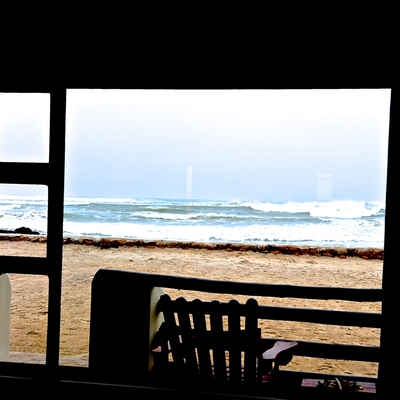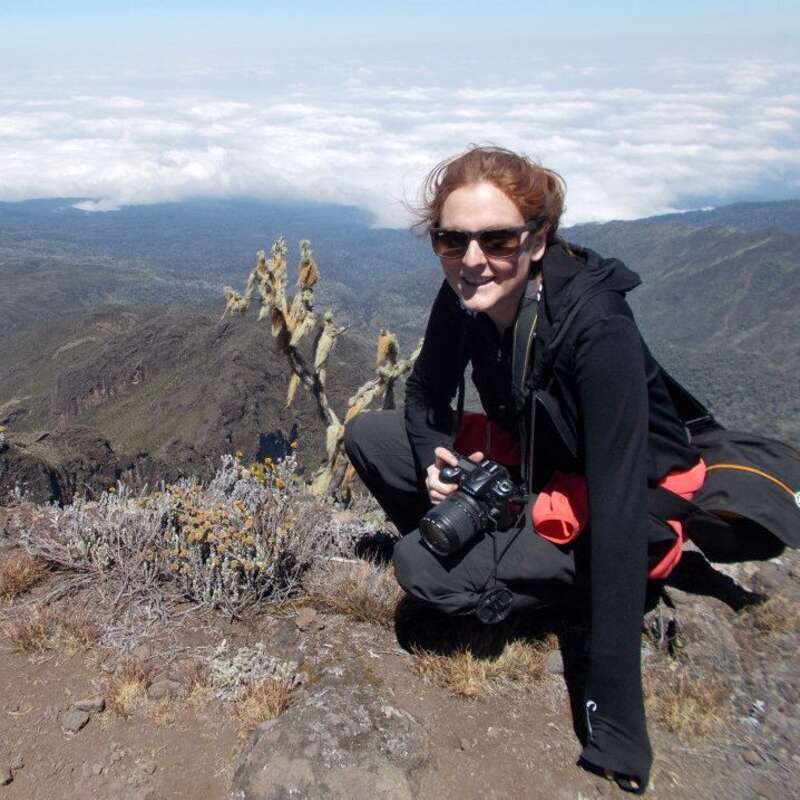About Cape Cross Lodge
Cape Cross Lodge stands on a windswept beach of Namibia’s Skeleton Coast, very close to Cape Cross Seal Reserve.
Comfortable and modern, it’s about an hour-and-a-half's drive north of Swakopmund.
With its location between Swakopmund and Damaraland, Cape Cross Lodge makes a pleasant and reasonably efficient stopover – though as Swakopmund is only an hour-and-a-half’s drive south, many people prefer to stay there instead. It’s very much a hotel in style, rather than a place that you would choose to linger, but its proximity to the seal reserve, its setting on the Skeleton Coast and its ease of access make it a convenient option on a northern Namibia itinerary.
Our view
With its location between Swakopmund and Damaraland, Cape Cross Lodge makes a pleasant and reasonably efficient stopover – though as Swakopmund is only an hour-and-a-half’s drive south, many people prefer to stay there instead. It’s very much a hotel in style, rather than a place that you would choose to linger, but its proximity to the seal reserve, its setting on the Skeleton Coast and its ease of access make it a convenient option on a northern Namibia itinerary.
Accommodation
18 rooms, 2 suites
Children
Best for aged 5+
Open
All year
Activities

4WD Safari

Birdwatching

Private activities
Traveller reviews of Cape Cross Lodge
64 real, un-edited reviews from Expert Africa's travellers.
Arrived 19 Aug 2024, 1 nights
"Cape Cross Lodge review"
Overall rating: Good
Arrived 23 Nov 2023, 1 nights
"Cape Cross Lodge review"
Overall rating: Excellent
Arrived 10 May 2023, 2 nights
"Cape Cross Lodge review"
Overall rating: Good
Arrived 6 Aug 2022, 1 nights
"Cape Cross Lodge review"
Overall rating: Excellent
Arrived 19 Jul 2022, 1 nights
"Cape Cross Lodge review"
Overall rating: Excellent
Arrived 18 Mar 2022, 1 nights
"Cape Cross Lodge review"
Overall rating: Average
Arrived 9 Mar 2022, 1 nights
"Cape Cross Lodge review"
Overall rating: Excellent
Arrived 20 Oct 2020, 1 nights
"Surprisingly good lodge"
Overall rating: Excellent
Arrived 18 Sep 2019, 1 nights
"Cape Cross Lodge review"
Overall rating: Excellent
Arrived 27 Mar 2019, 1 nights
"Perfect stopover point on the coast"
Overall rating: Excellent
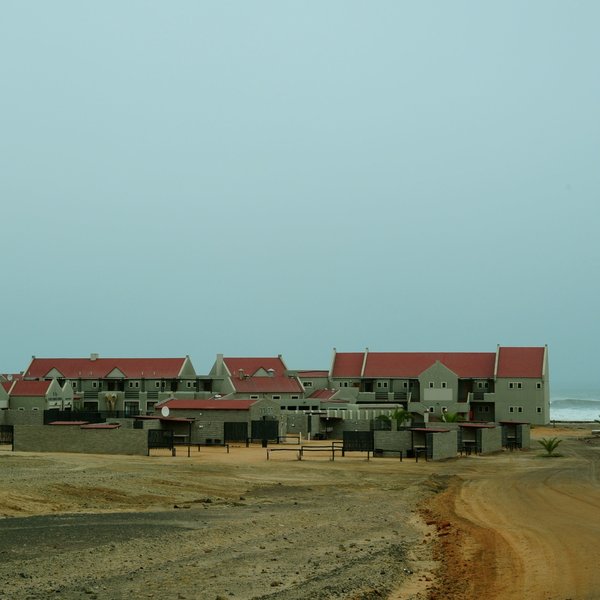
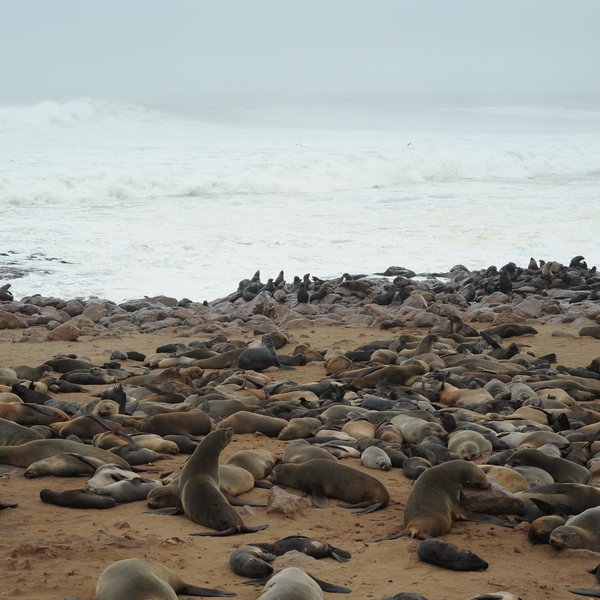
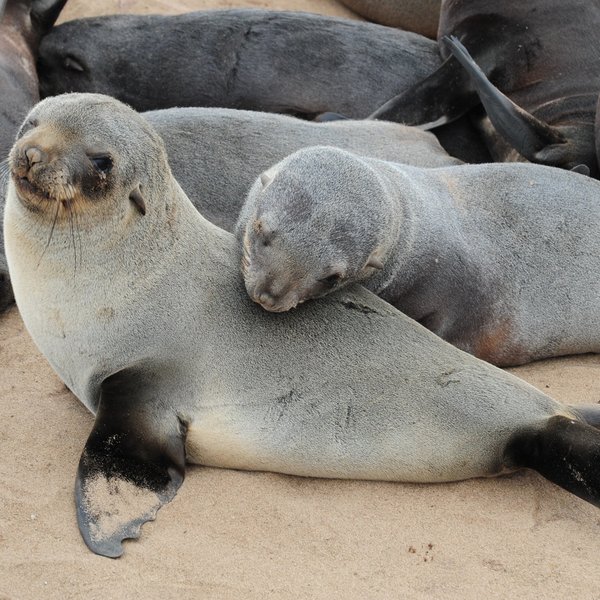
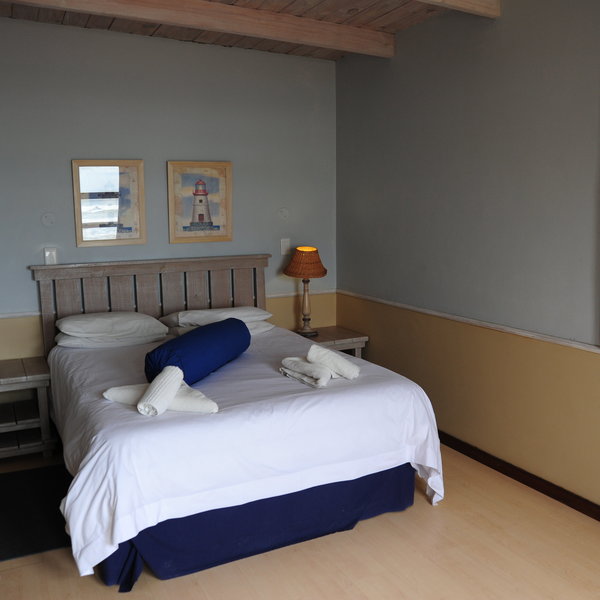
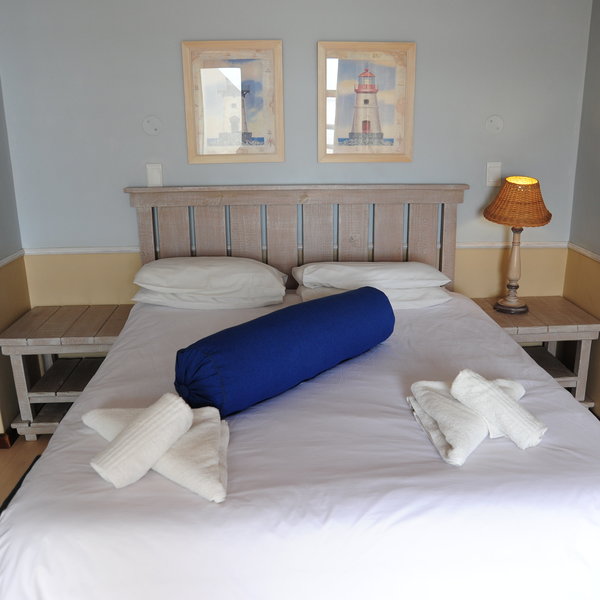
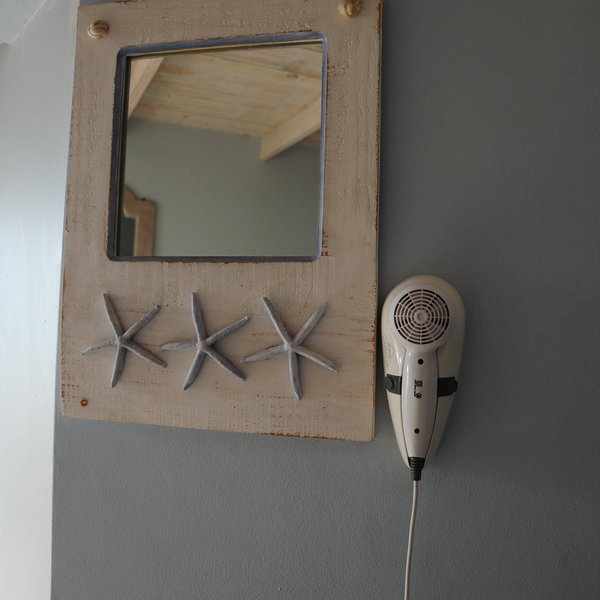
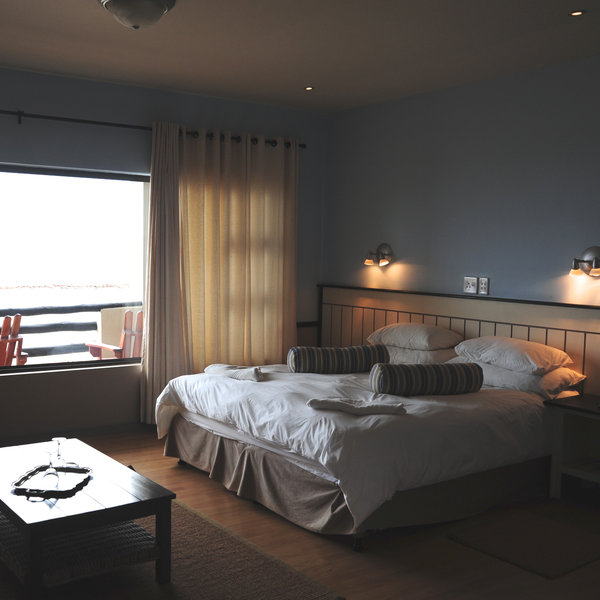
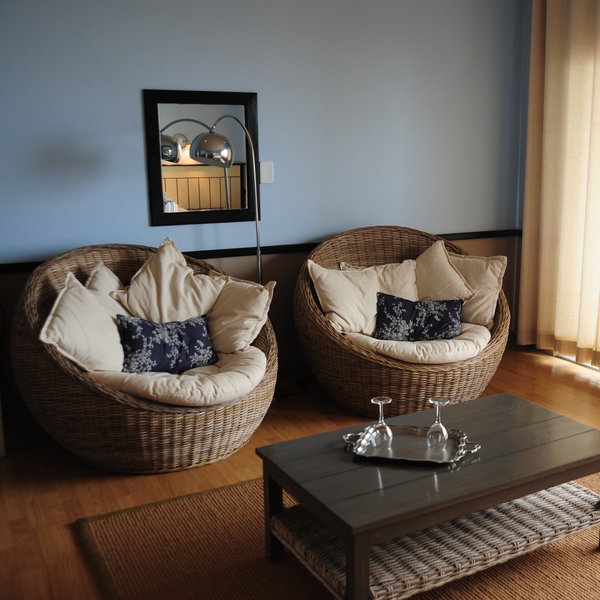
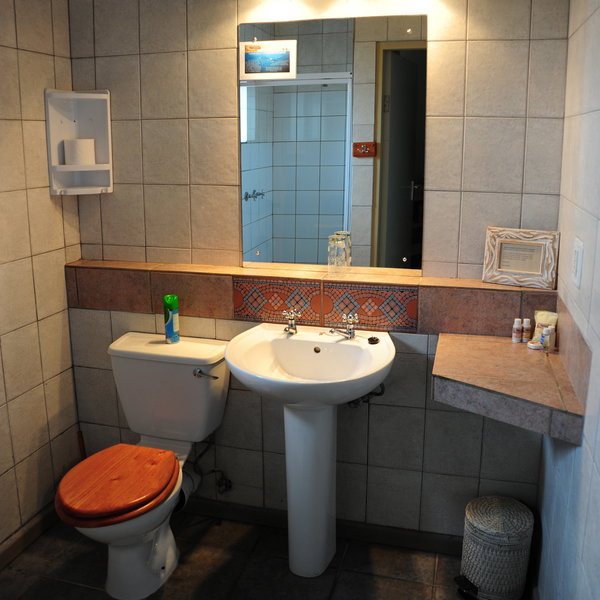
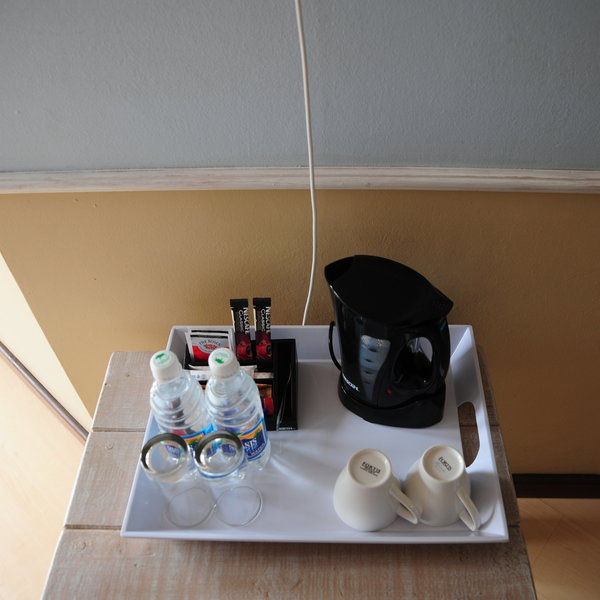
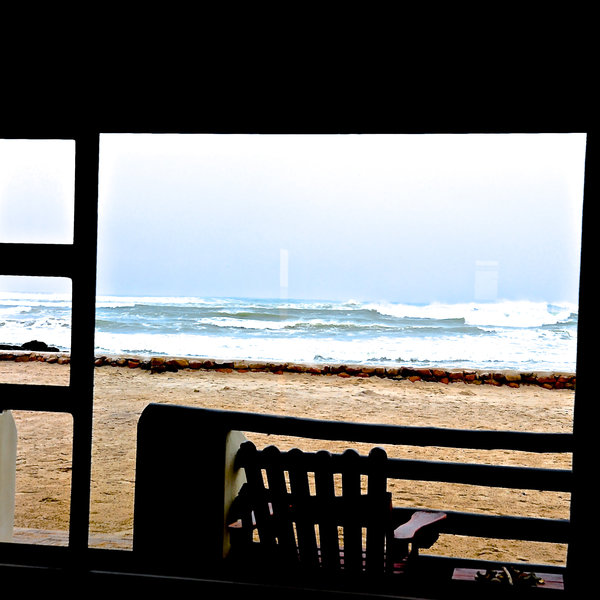
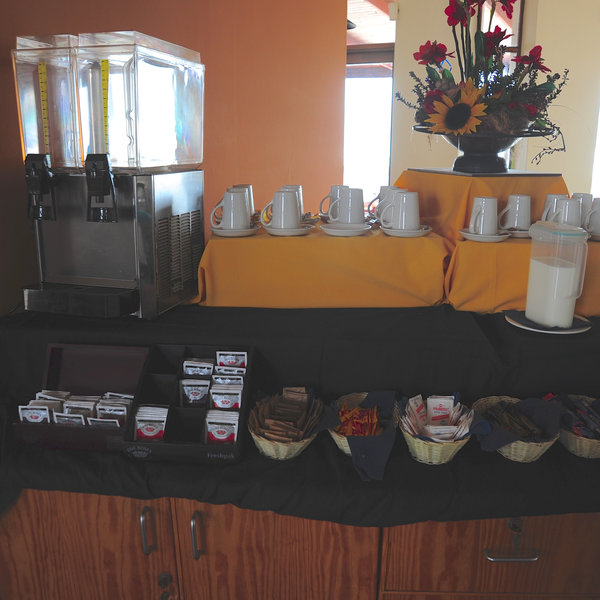
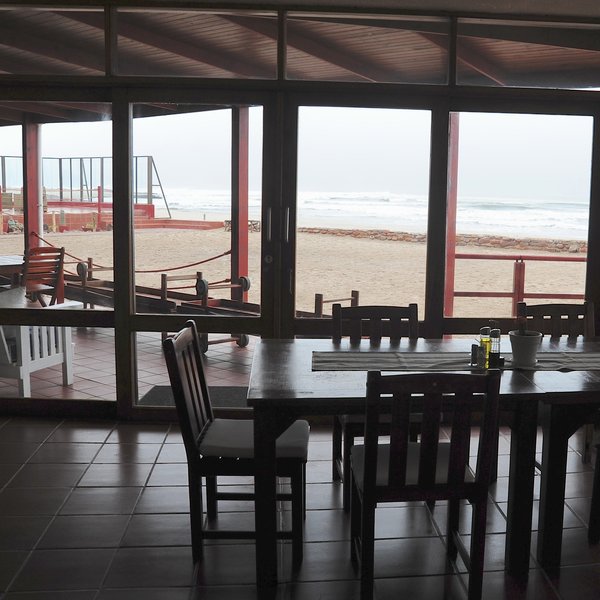
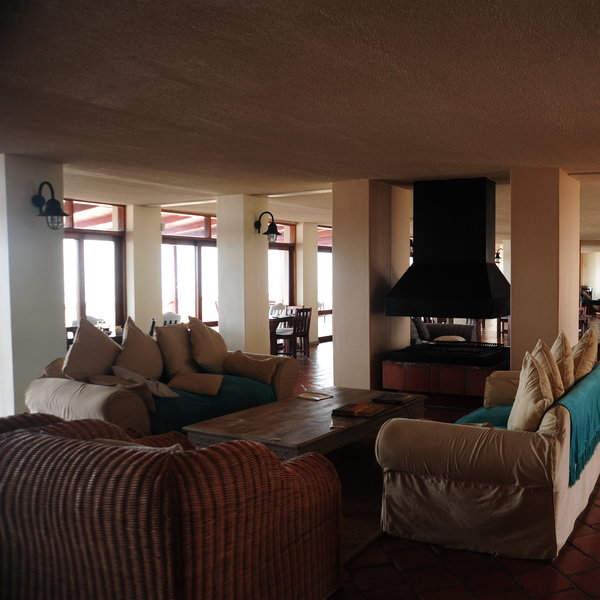
Expert Africa's gallery
When we travel we take lots of photos ourselves to give you a real and un-edited view of the holidays. See our 27 pictures of Cape Cross Lodge to get the candid view.
View galleryCape Cross Lodge: Our full report
Cape Cross Lodge stands on a windswept beach of Namibia’s Skeleton Coast, very close to Cape Cross Seal Reserve.
Comfortable and modern, it’s about an hour-and-a-half's drive north of Swakopmund.
Cape Cross Lodge is built in a mix of Cape Dutch and west coast fishing-village style, within a fully glassed front that frames the beach and the ocean beyond, and lets in plenty of light. Downstairs, individual fireplaces break up the open-plan lounge and dining areas, helping to make it feel cosy and warm – particularly important when the wind can make it bitterly cold outside. Individual dining tables are relatively formal, but comfortable sofas and low tables dotted with coffee-table books soften the mood. At one end, an extensive bar adds a slightly pubby atmosphere, while secreted away downstairs is a private wine cellar with a good selection of wines and spirits, and a conference room with satellite TV. Outside, see-through screens serve to protect guests on the terrace from the elements, allowing you to sit out with a drink or a meal and watch the waves.
Accommodation at Cape Cross consists of 18 bedrooms and two suites. Four of these rooms have interleading doors to create family unites, and six are wheelchair accessible. Cape Cross is usually fairly cool at night, so the rooms do not have air conditioning, fans or mosquito nets, but there are no heaters either, so you may want to request extra blankets, ideally before dinner.
- Each of the 18 spacious bedrooms is decorated in pastel colours and furnished with wicker furniture, twin beds and good-quality fabrics; in some, a bowl of seashells adds to the ocean theme. Rooms on the first floor have private balconies with beautiful sea views and wooden deckchairs and tables, and those on the ground floor share the same view, and they have direct beach access.
Simple but elegant en-suite bathrooms – most with a shower, but no bath – are clean and practical, though some are a little small. All have an electric shaver point, and offer complimentary shampoo, body lotion and soap. - The two suites are enormous! They are slightly sparsely decorated and somewhat lacking character, but the great sea views make up for this!
Activities
4WD Safari
Birdwatching
Private activities
Families & children
- Attitude towards children
- Children of all ages are welcome at Cape Cross Lodge.
- Property’s age restrictions
- None
- Special activities & services
- There are no special activities at Cape Cross Lodge for children but they can quite happily play and walk along the beach with parental supervision (the ocean can be rough at times).
- Equipment
- Cots and highchairs can be provided for children, on request.
- Generally recommended for children
- Cape Cross Lodge would be fine for children as a stopover – although younger children would run out of things to do on a longer stay here.
- Notes
- The ocean can be very rough and the currents strong, so children must be supervised on the beach. Swimming is not an option.
Food & drink
- Usual board basis
- Half Board
- Food quality
- Breakfast is served buffet style between 6.30am and 10.00am; expect a variety of cereals, bread, muffins, cold meat, cheese, fruit and yoghurt to be laid out - on a table that looks almost makeshift, draped with fish nets and on wooden kegs.
An a la carte Lunch is served between midday and 3.00pm, and Dinner 6.00–9.00pm. Dinner is usually a set menu, but at busy times you can expect a buffet.
Tea/coffee and cake are available throughout the day, and are included in the price of an overnight stay. - Dining style
- Individual Tables
- Dining locations
- Indoor and Outdoor Dining
- Further dining info, including room service
- There is no room service available at Cape Cross Lodge.
- Drinks included
- Drinks are not included at Cape Cross Lodge
Getting there
- Location
- Skeleton Coast & Kaokoland, Namibia
- Ideal length of stay
- One night – it's usually used as a stopover.
- Directions
- Cape Cross Lodge is 122km north of Swakopmund, and 60km north of Henties Bay; clearly signposted just off the C34.
- Accessible by
- Self-drive or Fly-and-Transfer
Communications
- Communications
- There are no phones in the rooms but the lodge has cellphone reception. There is free WiFi in the main area.
- TV & radio
- There are no TVs or radios in the rooms but there is a central radio/entertainment centre that plays music throughout the day. There is a TV with satellite channels in the downstairs conference room.
Health & safety
- Malarial protection recommended
- No
- Medical care
- The closest hospital or doctor is in Henties Bay, which is about a 30-minute drive. For more comprehensive medical facilities, Swakopmund is about an hour-and-a-half’s drive away.
- Dangerous animals
- Low Risk
- Security measures
- There are no guards on site
- Fire safety
- There are no fire extinguishers in the rooms but there a few in and around the lodge.
Useful info
- Disabled access
- In Place
- Laundry facilities
- Laundry can be done at an extra charge per item and can be returned within 24 hours.
- Money
- Each room has an electronic combination safe.
- Accepted payment on location
- They accept payment with South African rand and Namibian dollars as well as Visa, Amex and Mastercard.
Plan and book your trip with Expert Africa
All of our trips are tailor-made, so we'll always adapt them to suit you. Talk to an Expert and let us plan and arrange your perfect trip.

Talk to an Expert
Call or email us now! We’ll match you with the Specialist in our team who is best suited to help you. Then together we can start planning your trip.

Set up your itinerary
Based on our experience and your ideas, your specialist will create a detailed, costed itinerary. We’ll refine it together, until we have a trip that you’re perfectly happy with.

Prepare for your trip
The same Specialist will make the seamless arrangements for your trip, send you detailed travel documents, and be available to answer any questions before you depart.

Travel with peace of mind
After you set off, you’ll be cared for by our partners in Africa, most of whom have worked with Expert Africa for decades. And if you ever need us urgently, we’re available 24/7.

When you return
We love to learn about your trip, and so will always be grateful if you’ve the time to give feedback to your Specialist when you return.
Cape Cross Lodge's location
Look closer at the environment and surroundings of Cape Cross Lodge.
Other lodges in Skeleton Coast & Kaokoland
Alternative places to stay in this same area.
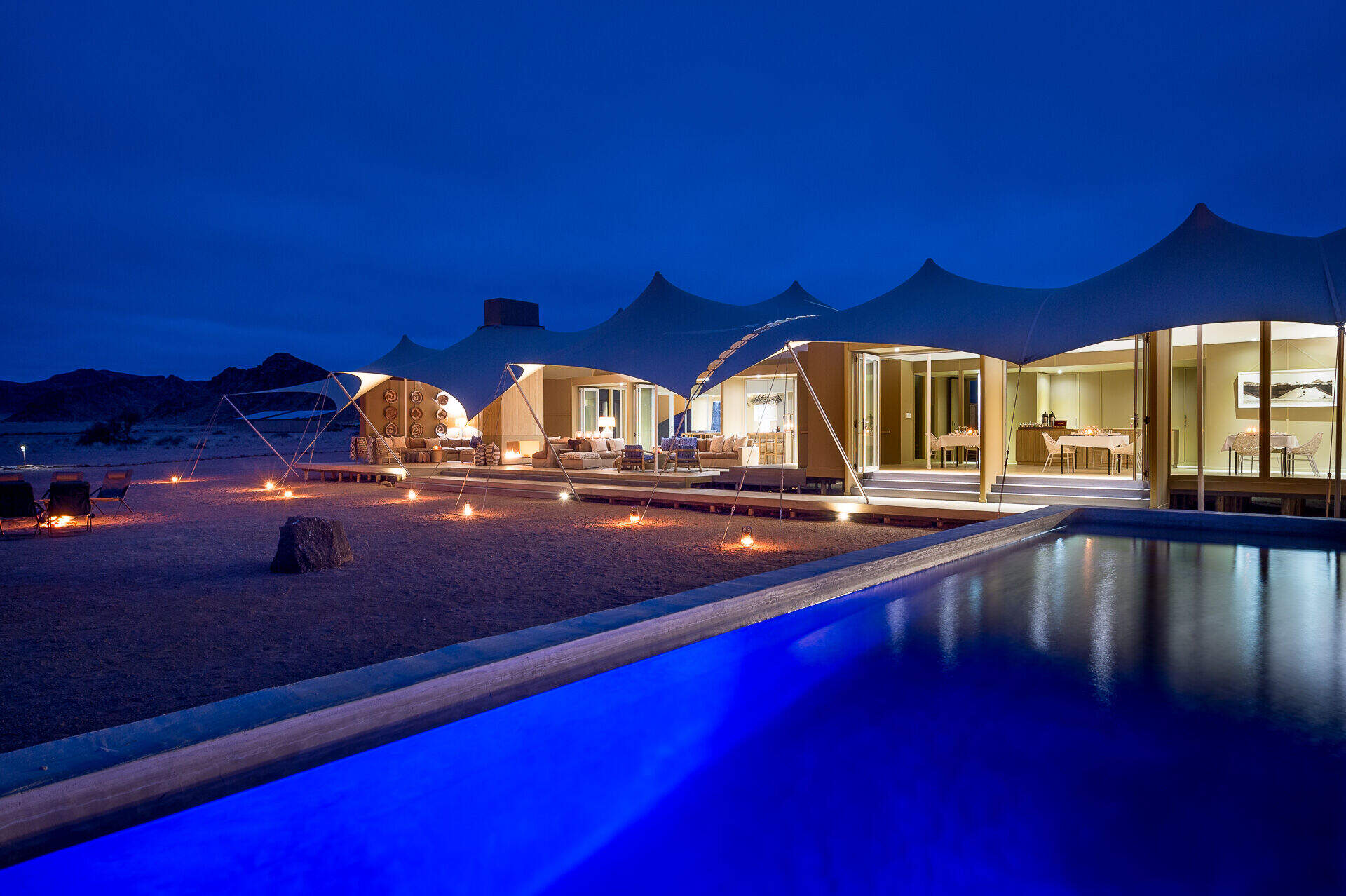
Hoanib Skeleton Camp Camp
Hoanib Skeleton Coast Camp is actually situated 42km inland in Kaokoland, this said they offer a superb guided day trip to the coast.
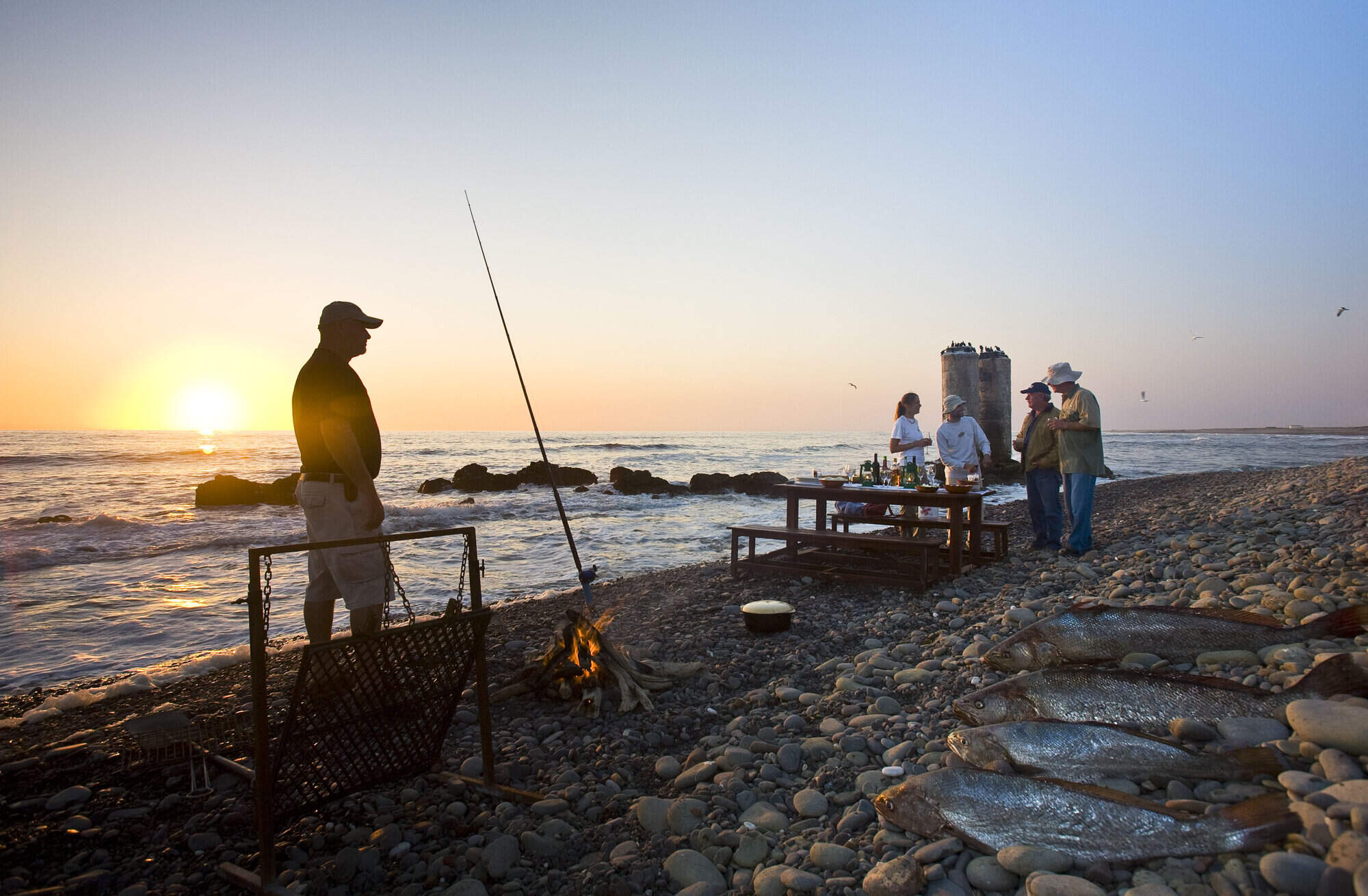
Terrace Bay
Terrace Bay is bleak. However, those that stay here come to experience the remote and inhospitable nature of the Skeleton Coast.
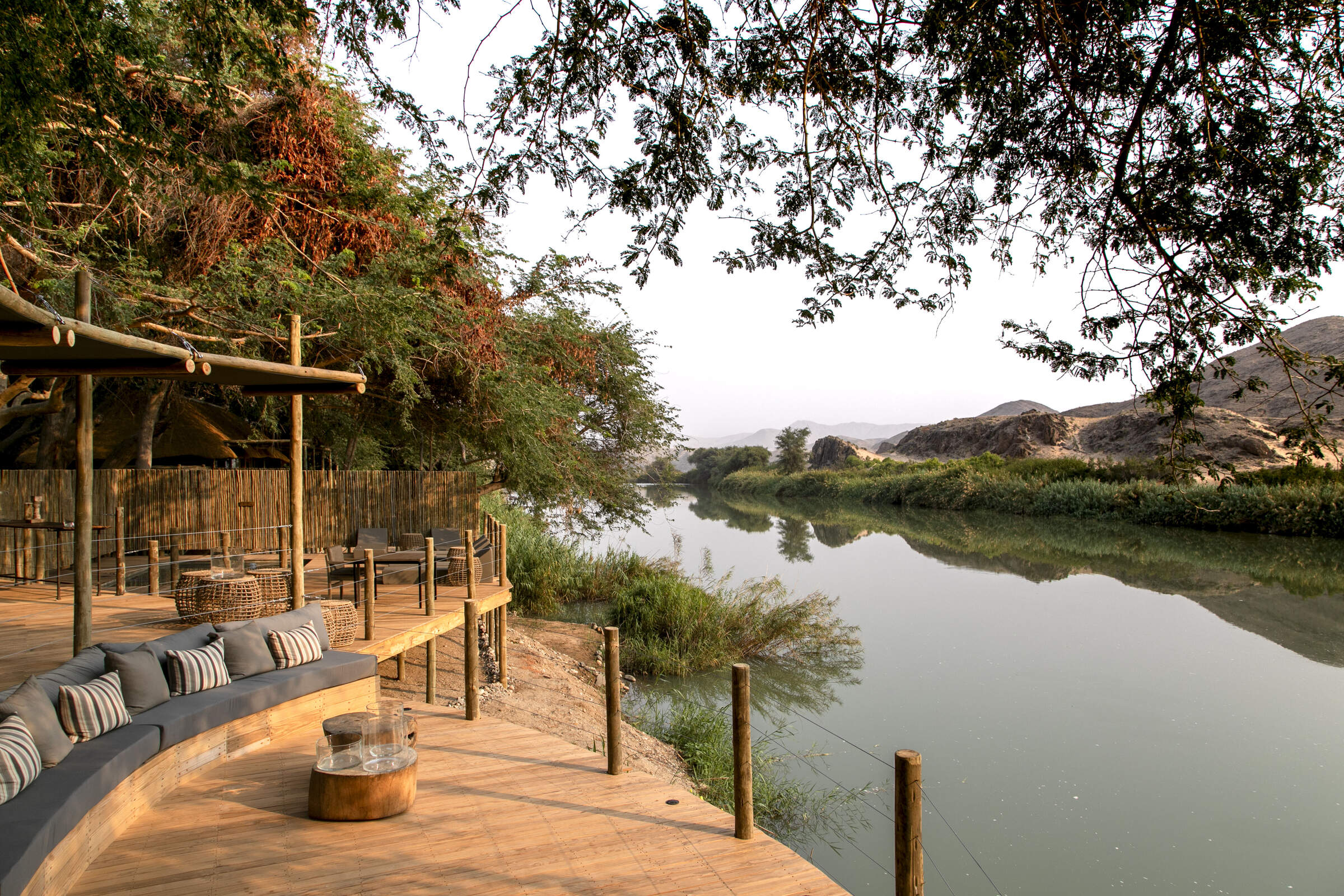
Serra Cafema
The luxurious Serra Cafema is in the most remote corner of Namibia - at the north end of Hartmann's Valley, across the Kunene River from Angola.
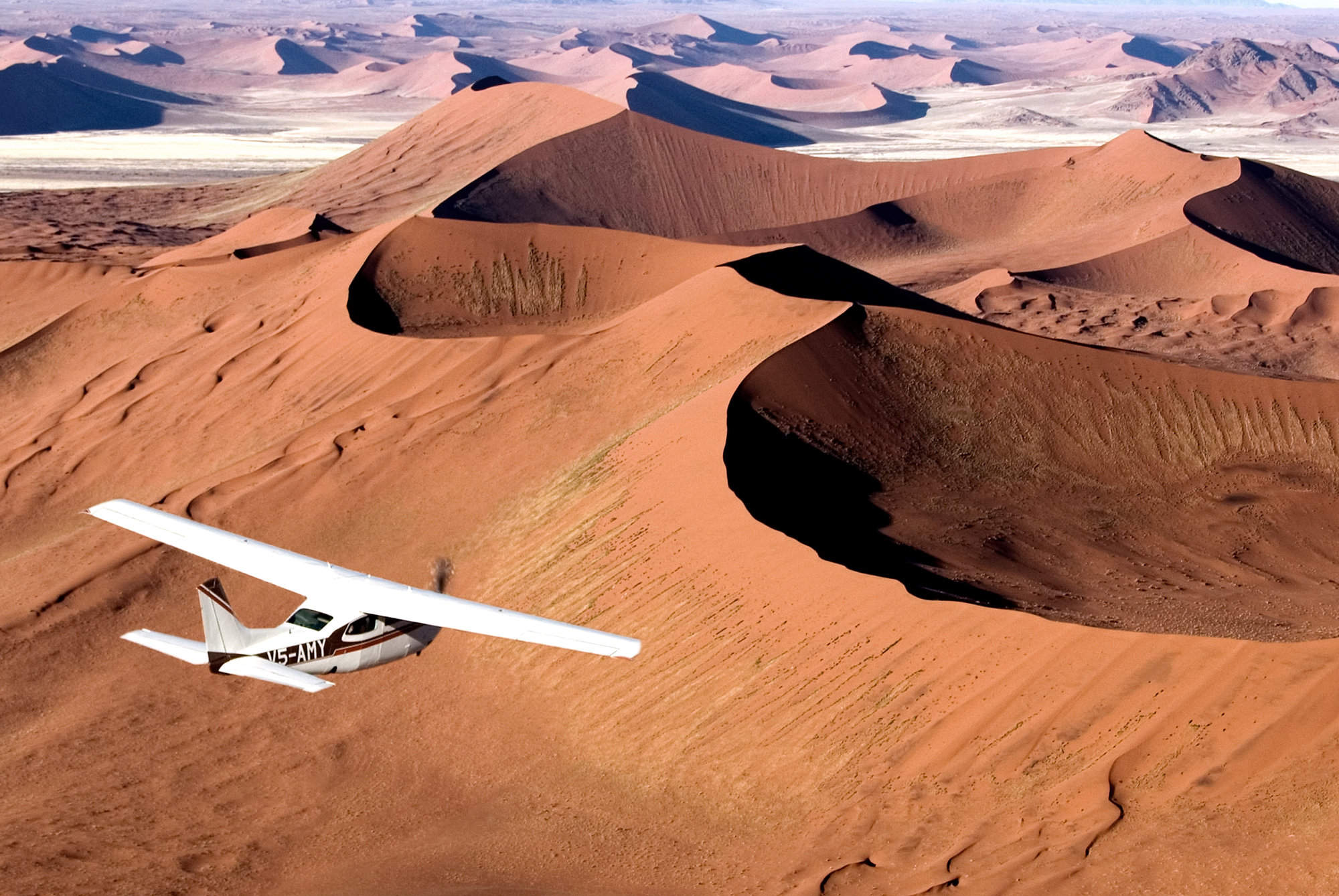
Skeleton Coast Safaris
Skeleton Coast Safaris is a small, family-run operation that has organised inspirational trips to this remote area of Namibia for nearly 50 years.
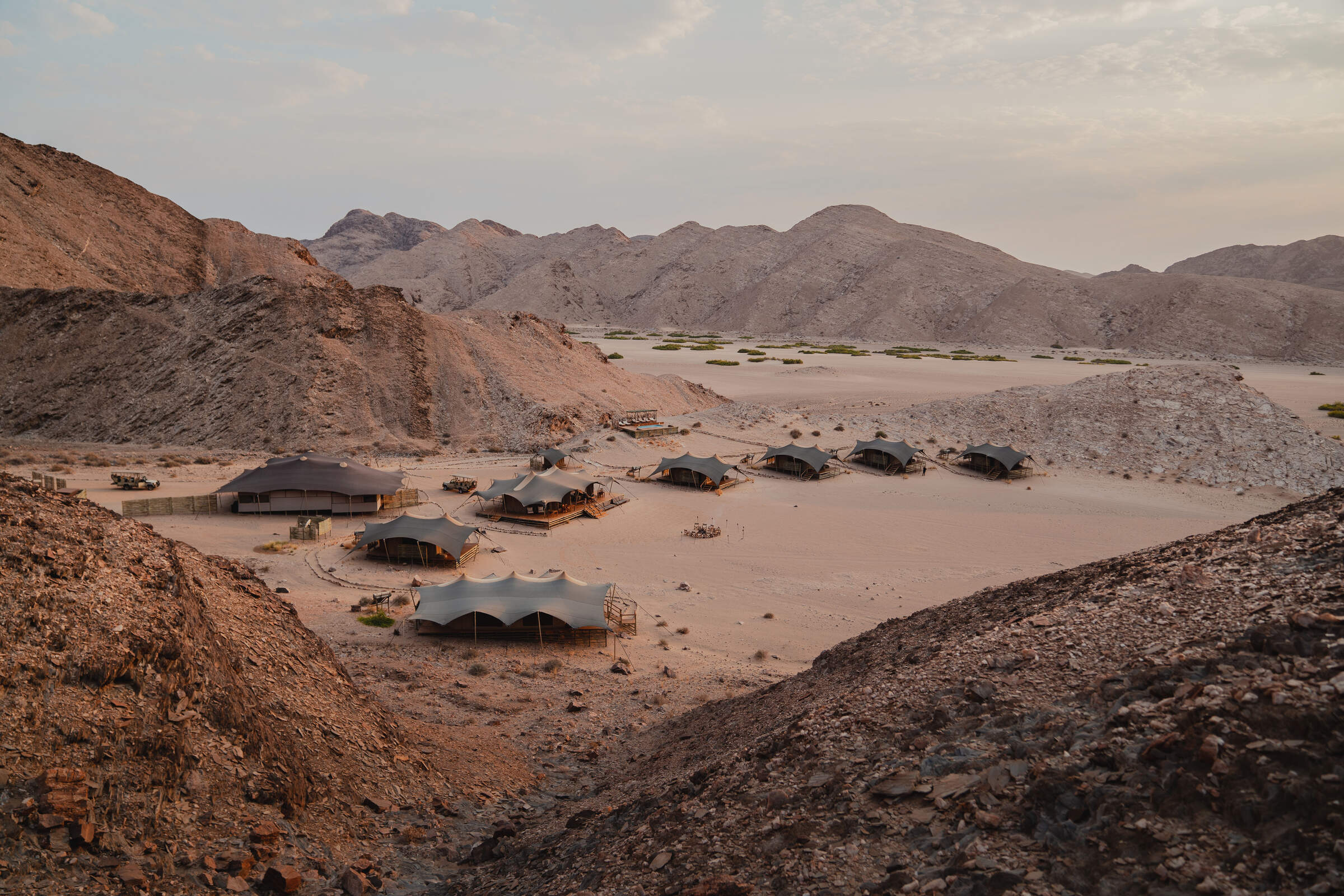
Hoanib Valley Camp
The intimate and remote Hoanib Valley Camp offers a rare chance to explore this dramatic corner of Namibia and to search for its sparse desert-adapted wildlife.
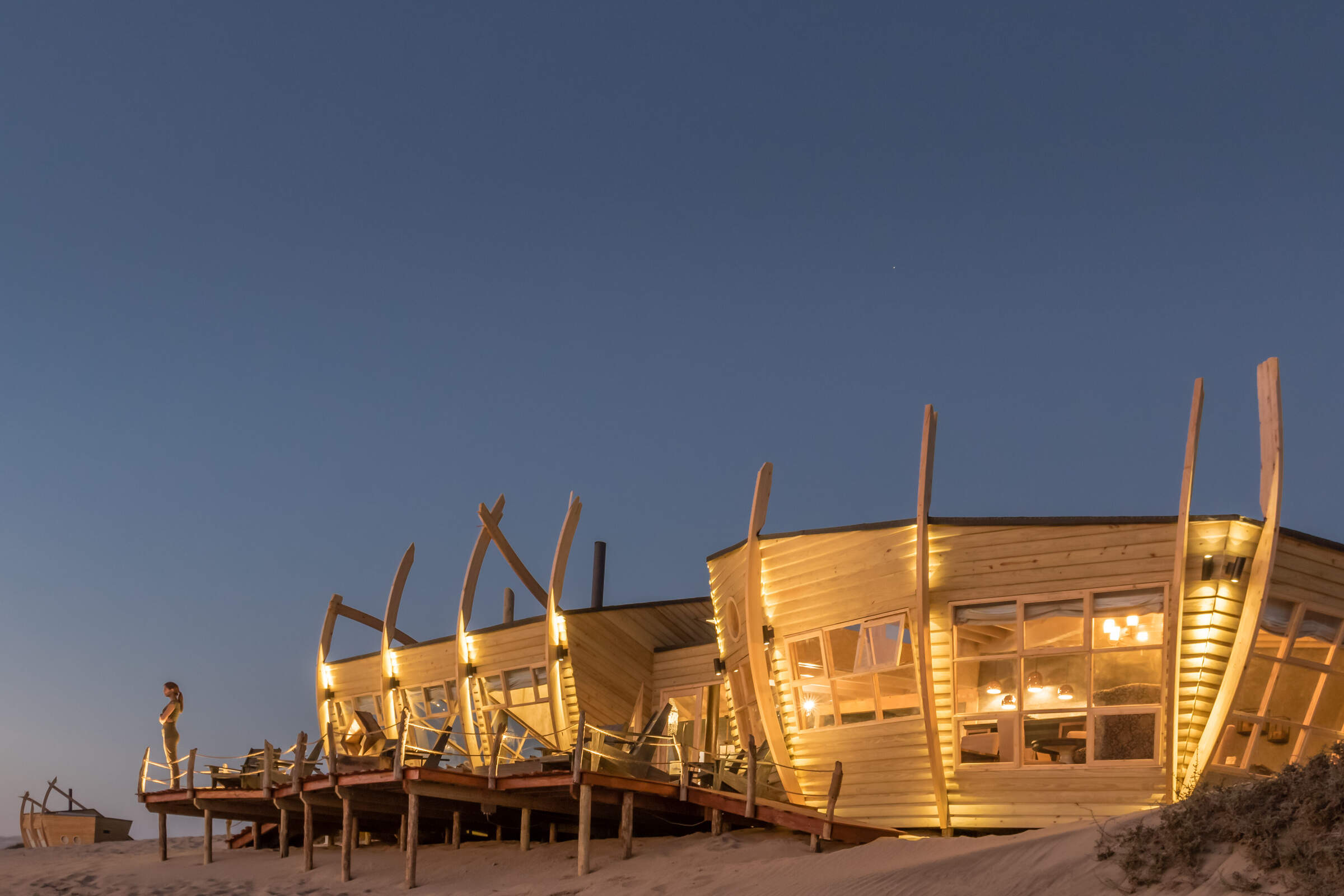
Shipwreck Lodge
The only property on this desolate stretch of coastline, the extraordinary Shipwreck Lodge opens up a new section of the Skeleton Coast National Park
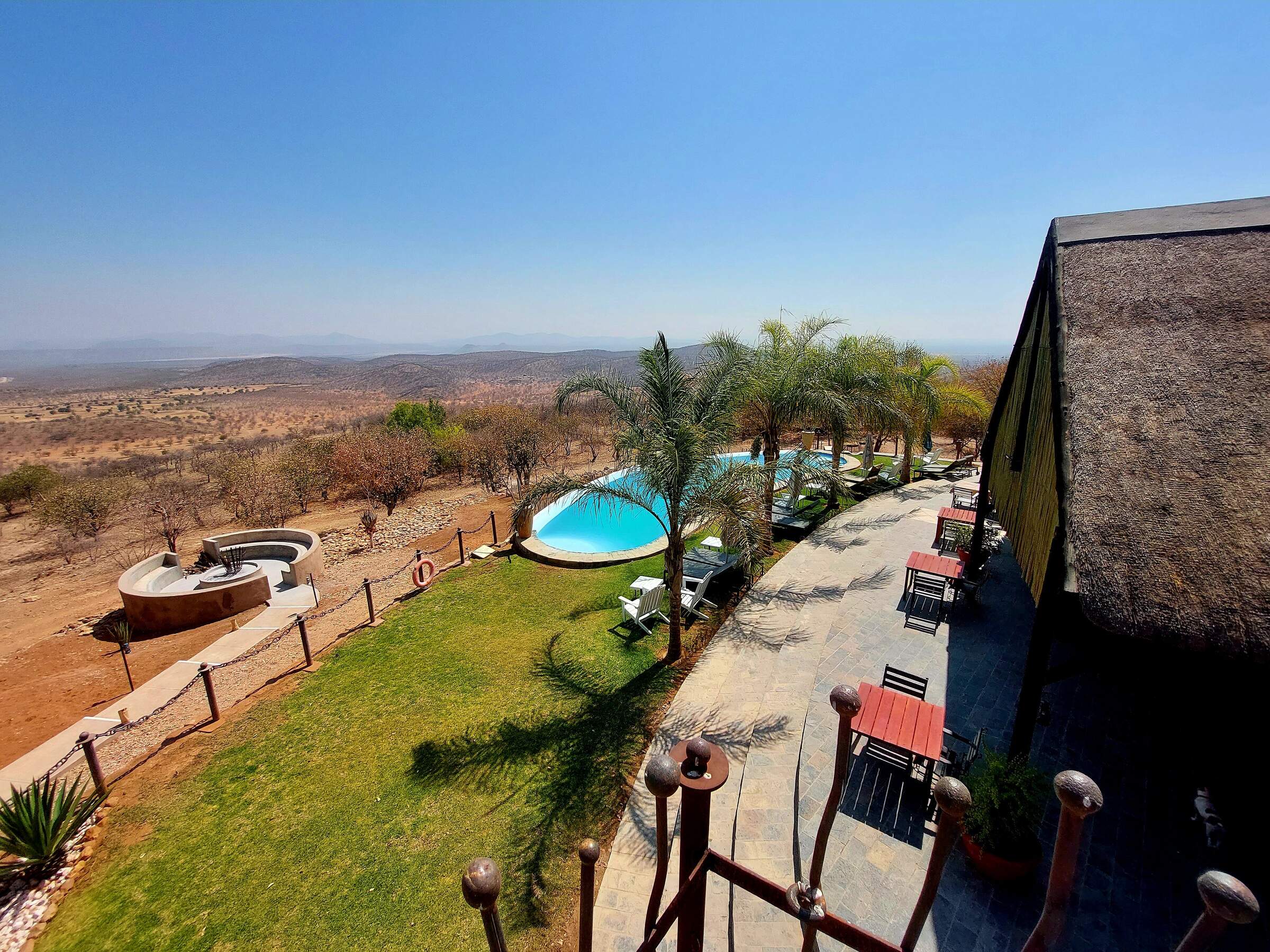
Opuwo Country Lodge
Opuwo Country Hotel provides comfortable accommodation is well situated for a night's stop before travelling into remote parts of Kaokoland.
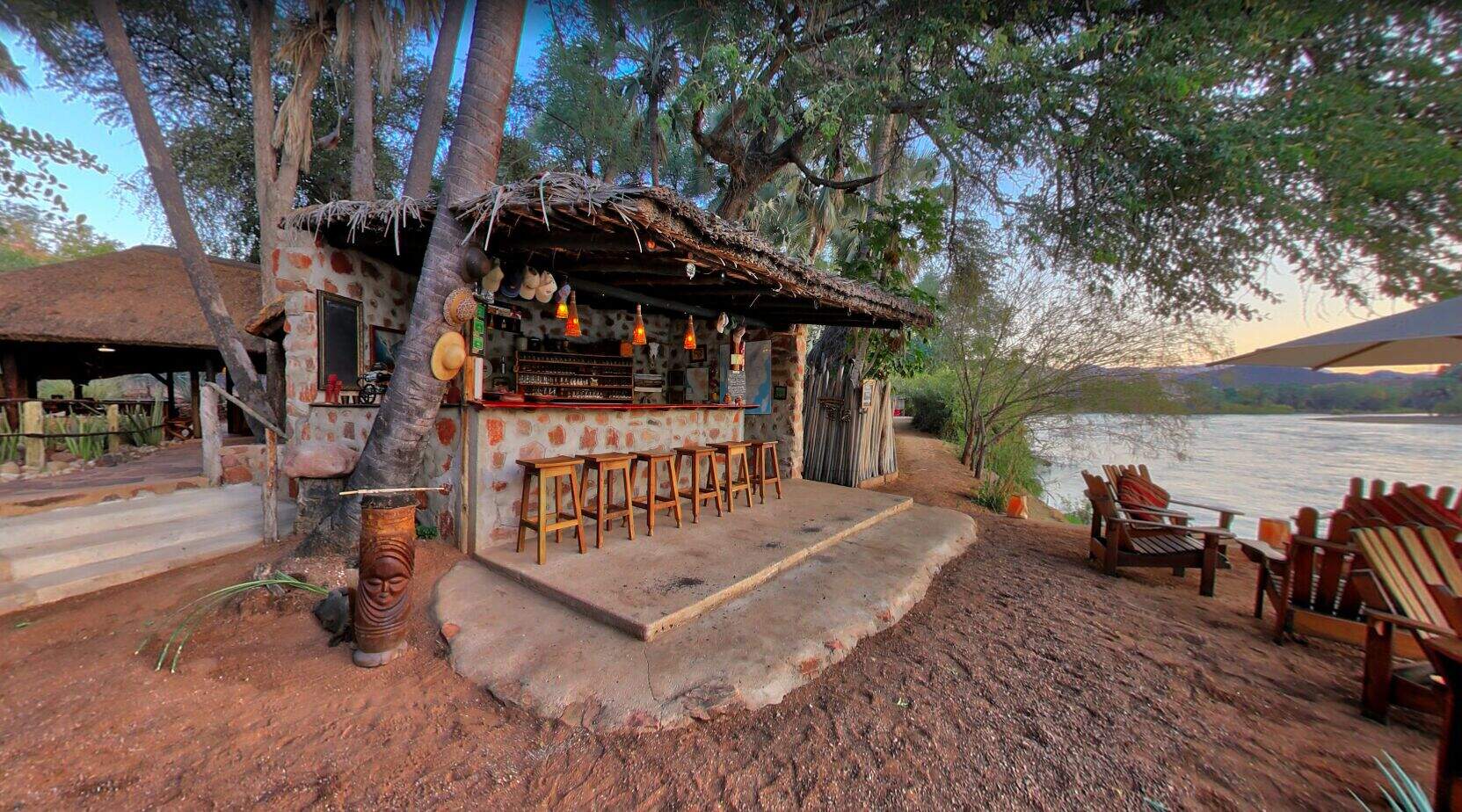
Epupa Camp
Epupa Camp is a welcoming oasis set on the palm-fringed banks of the Kunene River in north-west Namibia and close to Epupa Falls.
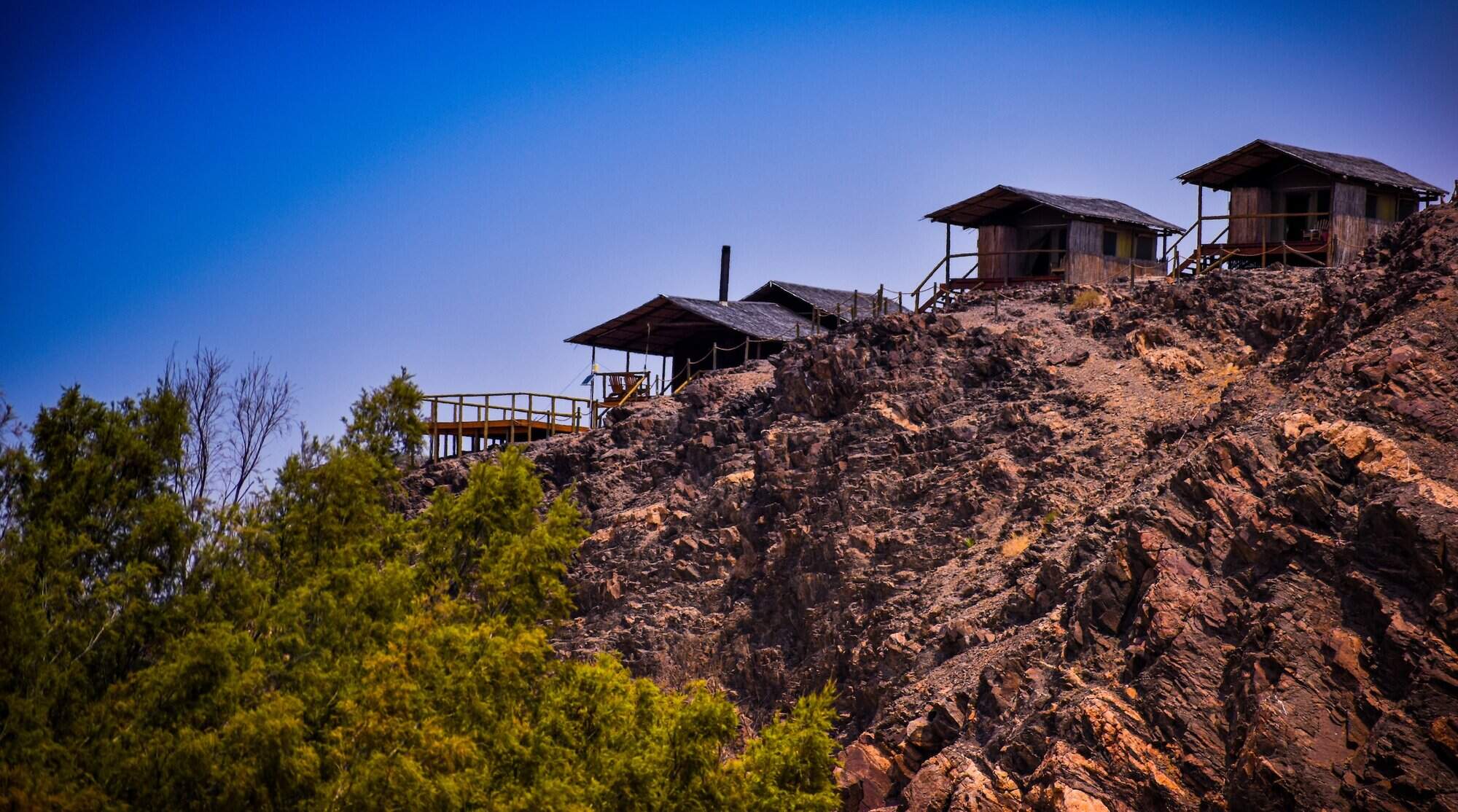
Leylandsdrift Camp
Used exclusively on the second night of a Skeleton Coast Safari, Leylandsdrift is in a beautiful location and is a good place to track desert-adapted elephants.
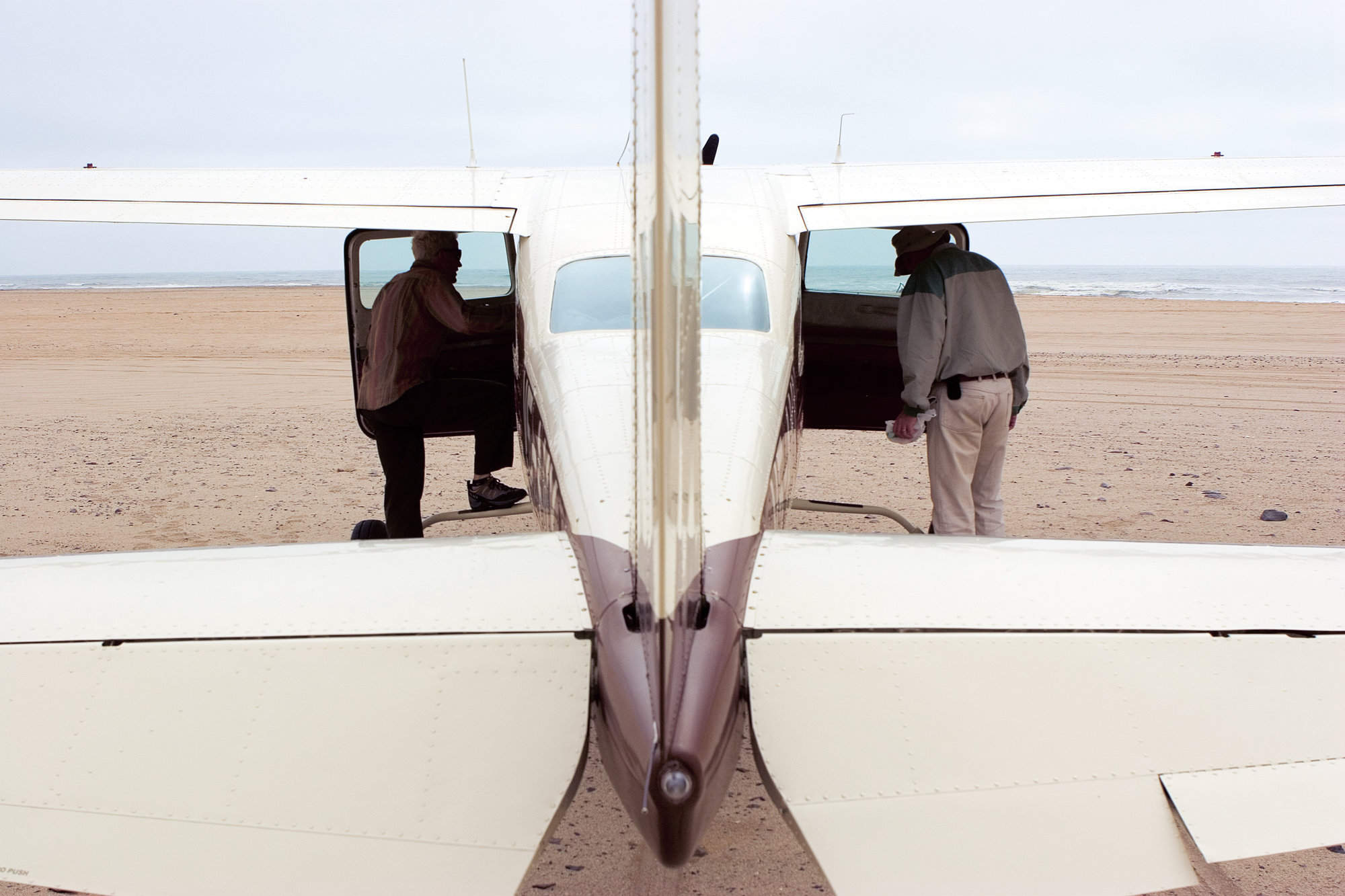
Kunene River Camp
Used exclusively on the final night of a Skeleton Coast Safari, the simple Kunene River Camp occupies a dramatic riverside location with some excellent birding.
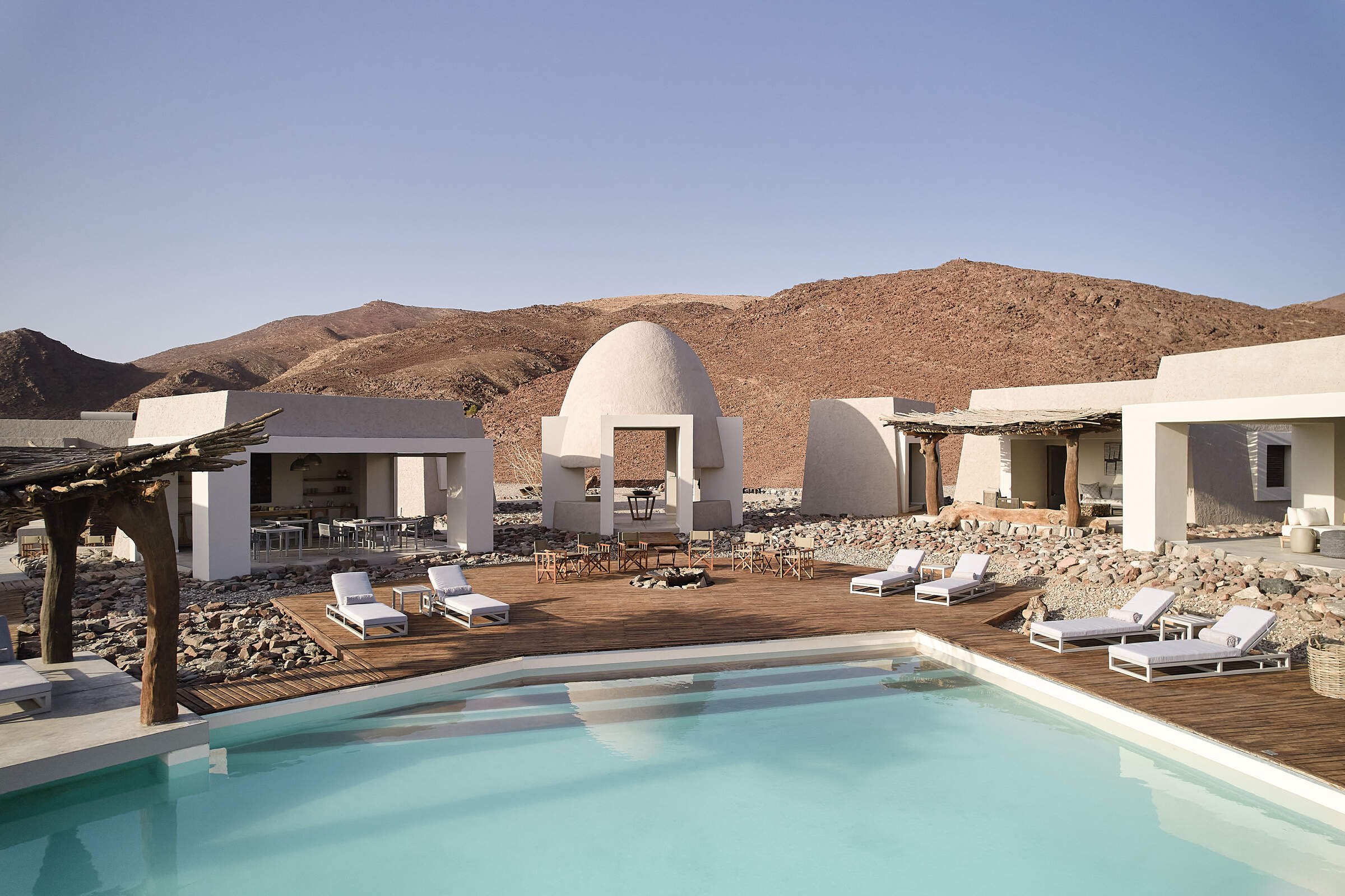
Okahirongo Elephant Lodge
Tucked away in Namibia's remote north-west, Okahirongo Elephant Lodge offers an unexpected level of luxury, with stunning views and plenty of activities.
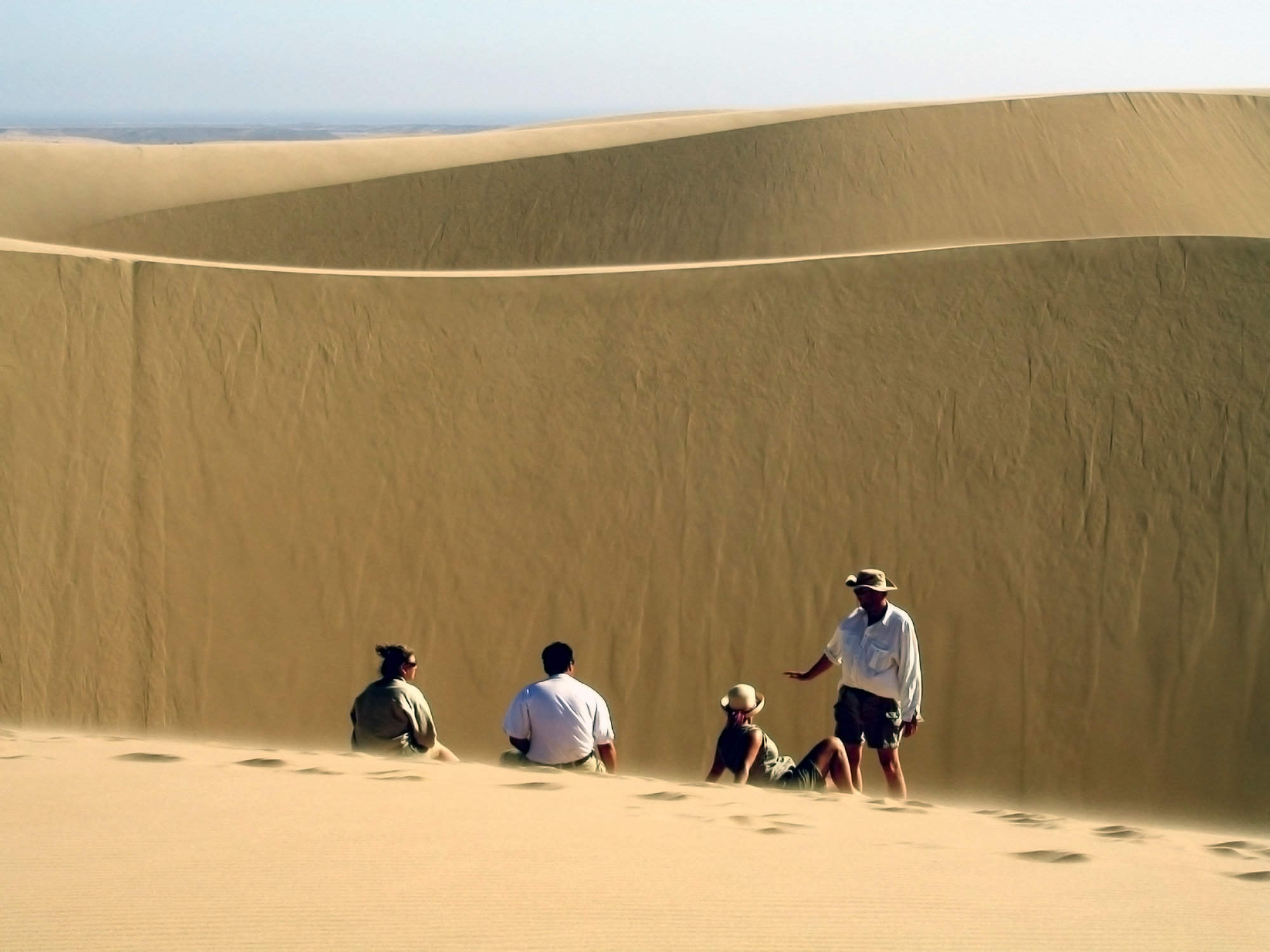
Kuidas Camp
Usually the first-night stop on a Schoeman Skeleton Coast safari, Kuidas is a very simple camp with stunning views of the Huab River valley.
When to go to Skeleton Coast & Kaokoland
Our month by month guide: What it's like to visit Cape Cross Lodge in Skeleton Coast & Kaokoland
Jan
Feb
Mar
Apr
May
Jun
Jul
Aug
Sep
Oct
Nov
Dec
Skeleton Coast & Kaokoland in January
The Skeleton Coast experiences its rainy season in January, though precipitation remains sparse in this desert environment. The Ugab River and other ephemeral rivers may briefly come to life, creating a spectacle in the usually arid landscape. Despite the rain, temperatures can still reach around 30°C/86°F.
The greening landscape makes a refreshing change, especially in desert dune seas. Migrant species arrive in force, making it an excellent time for birdwatching along the coast and in areas like the Swakop River. In the northern part of the Skeleton Coast National Park, where rains are more reliable, desert animals look healthy, with shiny coats, due to the abundance of food.
- Variable weather with fog common along coast
- Cape fur seal pups growing rapidly at colonies
- Wildlife looking well fed, with shiny coats
- Few tourists, low rates at lodges and camps
- Occasional thunderstorms inland from the coast
Our view
This is not a great time to visit
Weather in January
Skeleton Coast & Kaokoland in February
February is typically the wettest month on the Skeleton Coast, though rainfall remains patchy. The central highlands near the park's eastern border and the Kunene River region can see heavier rain. Some February days are clear and hot, while others are cooler with building clouds, sometimes culminating in short, spectacular thunderstorms. These storms can generate flash floods in the park's ephemeral rivers, bringing them dramatically to life.
The landscape feels green and alive, with insects and smaller animals more easily seen. Many birds and animals in the Skeleton Coast National Park are raising their young during this time. However, the formation of small pools in the bush and thicker vegetation can make it challenging to spot larger wildlife as they disperse with easy to access water, especially in the northern sections of the park.
- Coastal fog persists, creating eerie atmosphere
- Seal colonies bustling with activity
- Desert-adapted wildlife more dispersed
- Low tourist numbers, great deals available
- Possible inland thunderstorms, coast stays dry
Our view
This is not a great time to visit
Weather in February
Skeleton Coast & Kaokoland in March
March usually sees the Skeleton Coast's main rains tailing off, though precipitation varies across the park. Many days are clear with strong sun, while others may end with short, spectacular thunderstorms, particularly in the inland areas. These storms reduce in frequency as the month progresses.
The landscape often appears vivid and green, especially around the Ugab and Hoanib rivers. Many birds and animals are finishing raising their young, so smaller animals and insects are in evidence. In the northern part of the Skeleton Coast National Park, where rains are generally heavier, pools in the bush and thicker vegetation can make it difficult to spot larger animals. However, this is an excellent time to observe desert-adapted wildlife thriving in the temporarily lush environment.
- Weather becoming more stable along coast
- Seal pups learning to swim at Cape Cross
- Animals well-fed after inland rainy season
- Wildlife harder to spot in expansive desert
- Few tourists, ideal for solitude seekers
Our view
A good time to visit, with pros & cons
Weather in March
Skeleton Coast & Kaokoland in April
April typically brings dry weather to the Skeleton Coast, with an ever-decreasing chance of rain. Temperatures fall below their summer peak but remain pleasant and warm during the day. Nights might have a slight chill, especially in desert areas. The rains usually leave many parts of the park verdant and green, so animals are in fantastic condition, often with fast-growing young in attendance.
With less dust in the atmosphere, photographers can capture clear shots of spectacular landscapes and healthy animals. Stargazing becomes increasingly rewarding as the month progresses. In the northern sections of the Skeleton Coast National Park, water and food remain in plentiful supply, so finding big game can be trickier than later in the year. However, this is an excellent time for observing a wide variety of wildlife.
- Cooler nights, pleasant daytime temperatures
- Migrant birds begin departing the coast
- Desert flora starting to dry out inland
- Easter brings slight increase in visitors
- Clear conditions for sharp photographs
Our view
A good time to visit, with pros & cons
Weather in April
Skeleton Coast & Kaokoland in May
By May, the Skeleton Coast is usually drying out fast. If the rains have been good, the land remains green, but wildlife starts to congregate at more permanent water sources like the Hoanib and Uniab rivers. Typical days are warm with crisp, clear mornings and blue skies. Evenings are usually cool, with temperatures potentially dipping below 10°C/50°F overnight, especially in desert areas.
The air quality and clarity can be amazing, making this an ideal month for photography of the park's dramatic landscapes. Many lodges still charge low season prices, although some have started to introduce higher shoulder season rates. May's good-value rates, increasingly good wildlife sightings, beautiful landscapes, and crystal-clear air combine to make this one of the best months to visit the Skeleton Coast.
- Mild days, cool nights ideal for exploration
- Excellent clarity for coastal photography
- Wildlife starting to congregate near water
- Lodges still offer good rates
- Great sea kayaking as seal pups take to water
Our view
A very good time to visit
Weather in May
Skeleton Coast & Kaokoland in June
June brings dry conditions to the Skeleton Coast. Skies are blue and usually largely cloudless. Days are lovely, warm, and dry; nights are cold, sometimes below freezing in desert areas. Most swimming pools at lodges are outdoors and too cold for all except the very dedicated. Warm clothing is essential for early morning and late evening nature drives.
In the northern part of the Skeleton Coast National Park, wildlife viewing enters its dry-season pattern, focusing around water sources. Photographers come to the area for the superb air clarity, with minimal dust or smoke. The Cape Cross Seal Colony becomes increasingly active as the young seals join parents on fishing trips. Historically, June rates have been low, but with increasing popularity, many lodges now count it amongst their high-season months.
- Clear, bright days with cold nights
- Prime time for scenic flights over coastline
- Wildlife gravitating to scarce water sources
- Most lodges move to high season rates
- Fishing season kicks off with great catch opportunities
Our view
A very good time to visit
Weather in June
Skeleton Coast & Kaokoland in July
July brings usually warm daytime temperatures upwards of 20°C/68°F to the Skeleton Coast, along with good sightings of desert-adapted wildlife such as elephants, giraffe, oryx, jackals and perhaps even lion. Watching elephants climb hillside dunes is often a highlight! Rain is very unusual, and clear skies make for great photographs of the stark desert landscapes.
Once the sun sets, temperatures cool rapidly, bringing cold nights that may dip below freezing in desert areas. Visitors should dress in layers and be prepared for cold early-morning and late-afternoon drives. Across the park, lodges charge high season rates; many are fully booked a year or more in advance, especially during European school holidays from the latter half of July to late August.
- Dry days, cold nights perfect for stargazing
- Whale watching season begins off the coast
- Excellent time to view desert wildlife
- Peak season rates at coastal accommodation options
- Cool temperatures for nature walks
Our view
A very good time to visit
Weather in July
Skeleton Coast & Kaokoland in August
August marks the height of winter on the Skeleton Coast. Expect cloudless skies and plenty of warm sun during the day, but nights can drop to freezing in desert areas. Visitors should dress in layers and bring warm clothes for chilly mornings and evenings. It's usually been 3-4 months since any significant rain, so the land is dry with only specialist desert plants standing out in their greenery. Many landscapes appear sparse and harsh, showcasing the raw beauty of the Skeleton Coast. Desert-adapted wildlife stays close to available water sources, helping to guarantee good animal sightings, particularly in the northern part of the park.
August is the most popular time to visit, especially for families. Advance booking is essential, often over a year in advance, for stays at the best lodges within the Skeleton Coast National Park.
- Clear skies, cold nights, warm days
- Marine mammals often seen on boat cruises
- Wildlife concentrated close to water points
- Busier season, advanced bookings recommended
- Ideal conditions for coastal adventure activities
Our view
Fantastic: the very best time to visit
Weather in August
Skeleton Coast & Kaokoland in September
September brings blue, cloudless skies and fantastic desert-adapted wildlife viewing to the Skeleton Coast. Rain is almost unheard of during this month. As September progresses, both days and nights get warmer. In some areas, daily maximums can reach the low 30s Celsius / mid 80s Fahrenheit, although low humidity ensures this feels comfortable.
The air becomes dustier, occasionally augmented by smoke from distant fires, creating a hazy atmosphere that can challenge photographers - though atmospheric sunsets are a delight. In the Skeleton Coast National Park, animals stay close to remaining water sources, making September one of the best months for viewing desert animals such as elephants, oryx and even lion. Consequently, September is one of the Skeleton Coast's most popular months for visitors. Seeing how remote communities exist in this barren setting is often a highlight.
- Quickly warming temperatures, still clear skies
- Fascinating insights to Himba communities
- Fantastic desert wildlife viewing in river valleys
- High season rates, lodges often fully booked
- Occasionally dusty skies create spectacular sunsets
Our view
Fantastic: the very best time to visit
Weather in September
Skeleton Coast & Kaokoland in October
October is usually the hottest and driest month on the Skeleton Coast. Temperatures build as the month progresses; towards the end, daily highs may exceed 40°C/104°F, though the low humidity makes even this heat bearable. In exceptional years, isolated rain showers may fall in late October. More usually, the end of the dry season sees wildlife watching at its best, particularly in the northern part of the Skeleton Coast National Park. Sightings of unusual species such as brown hyena and desert lion become more regular as the animals have limited water sources.
October is popular among landscape and unique wildlife enthusiasts and commands peak-season prices, even if dust and smoke may make the air hazy, challenging photographers. Visitor numbers can fade towards the end of the month, allowing a window for last-minute bookings at some lodges.
- Hot, dry conditions prevail along coast
- Marine wildlife abundant in coastal waters
- Exceptional desert game viewing in Hoanib area
- Still peak visitor time, book accommodations early
- Dining under stars on balmy nights in the desert is special
Our view
A very good time to visit
Weather in October
Skeleton Coast & Kaokoland in November
November is unpredictable on the Skeleton Coast; sometimes dry and hot, sometimes cloudier and cooler. Typically, mornings are hot and cloudless, with clouds appearing in the afternoon. Humidity builds and eventually breaks, resulting in spectacular thunderstorms that bring convection rainfall in late afternoons. Such storms are typically sparsely distributed and highly localised, being completely absent from the most arid desert areas. Places that do get good rain, like the Hoanib and Uniab river valleys, flush green with a tangible feeling of new life, softening the harsh landscapes.
Many mammals give birth to their young during this period. Once the rains come, wildlife disperses in search of food, and game viewing in the northern part of the Skeleton Coast National Park becomes more challenging. However, this is a great time for birdwatchers, with migrant species arriving in breeding plumage.
- Variable weather as summer approaches
- Cape fur seals begin breeding season
- Wildlife dispersing with first inland rains
- Shoulder season begins, rates become moderate
- Landscapes transforming with possible rain
Our view
A good time to visit, with pros & cons
Weather in November
Skeleton Coast & Kaokoland in December
December is often a drier period between the short and long rainy season. Clear mornings can give way to building clouds and spectacular evening thunderstorms, but often with little to no rain. These storms make for atmospheric skies and an interesting time for photographers. But even relatively short showers enable plant life to erupt, carpeting this thirsty land in green and providing food for the young animals as they grow. Animals disperse widely across the Skeleton Coast National Park, which can make game viewing more challenging than in the dry season. Many birds are breeding and sporting their most colourful plumage.
Christmas and New Year fall within local summer holidays, so accommodations can be surprisingly busy, especially in and around the park's coastal areas where temperatures are cooler.
- Warmer temperatures, chance of coastal fog
- Seal breeding season peaks at colonies
- Desert-adapted wildlife often have young
- Holiday period brings more visitors to coast
- Possible inland rains create lush landscapes
Our view
This is not a great time to visit
Weather in December

Looking for inspiration on where to travel next?
Visit our trip chooser to explore your options and find inspiration for your perfect African adventure
Inspire me